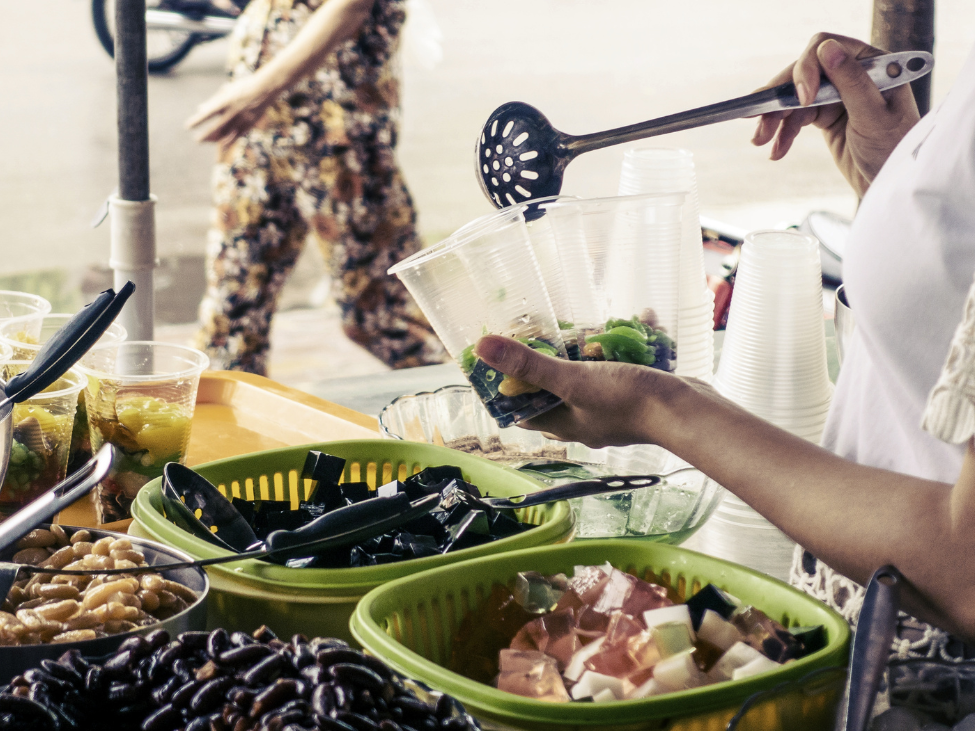Sweet Discoveries on My Hanoi Food Tour Journey
- Steve Mueller

- Jun 16
- 3 min read
Seven years of leading Hanoi food tours, and I still remember the exact moment dessert changed everything for me. It wasn't during some dramatic pho revelation or perfect banh mi discovery—it was watching Mrs. Lan layer che ba mau with the precision of a surgeon and the pride of an artist. Her weathered hands moved with muscle memory, each scoop of green mung bean, white coconut cream, and red azuki beans placed exactly where generations before her had taught it belonged. That Tuesday afternoon in a narrow alley off Hang Duong Street, I realized I'd been missing half the story of Vietnamese food culture.
I'd spent months focusing on the obvious crowd-pleasers, the dishes that make tourists gasp and reach for their phones. But the real conversations, the moments when locals truly opened up, happened over bowls of sweet soup and glasses of silken tofu pudding. These weren't Instagram moments—they were human moments, quiet and honest and completely transformative.
Mrs. Thanh, who sells banh flan near Hoan Kiem Lake, became my unofficial dessert professor. She'd grown up watching her French-trained grandfather perfect his custard technique, then learned from her Vietnamese grandmother how to add just enough fish sauce to make it sing in a completely different key. "Sweet needs salt to be true," she told me one evening, ladling caramel that was darker and more complex than anything I'd tasted in France. "Like life, you know? Cannot have one without the other."

The tao pho vendors taught me about rhythm. Every morning at 6 AM, I'd hear Mr. Duc's sing-song call echoing through the Old Quarter, his bicycle loaded with metal containers of silken tofu and ginger syrup. Following him became my meditation—watching how he'd stop at the same corners, serve the same customers, exchange the same gentle pleasantries before moving on. These weren't just business transactions; they were daily rituals that held neighborhoods together. When he finally let me try making the tofu myself, my clumsy attempts barely held together long enough to reach the bowl. His laughter was kind, but his message was clear: this wasn't just cooking, it was craft refined over decades.
The night I discovered banh ran changed my relationship with Hanoi's evening energy entirely. Following the sound of sizzling oil and catching the scent of toasted sesame, I found myself at a corner where three generations of women worked in perfect synchronization—grandmother rolling dough, mother coating with seeds, daughter manning the fryer. They moved like a dance they'd rehearsed for years. When I asked about their recipe, the grandmother just smiled and said, "No recipe. Only feeling." She pressed a fresh, golden ball into my hands, still too hot to eat but impossible to resist. The way it shattered between my teeth, releasing steam and sweet mung bean filling, felt like a small revelation about the importance of perfect timing.
Che dau trang became my litmus test for authentic local experiences. It's the dessert locals suggest when they trust you enough to skip the tourist highlights. Watching people's faces when I'd order it—surprise melting into approval—taught me more about cultural acceptance than any guidebook ever could. The vendors who make the best che dau trang don't advertise; they don't need to. Word travels through families, through neighborhoods, through the invisible networks that make Hanoi feel like a collection of small villages rather than a city of eight million.
These discoveries reshape how I think about food tourism entirely. Every Hanoi food tour I lead now includes these quiet moments, these humble desserts that don't photograph well but taste like belonging. I've learned that the most meaningful travel experiences aren't the ones that make the best stories back home—they're the ones that change how you see the world while you're still in it.

The vendors still laugh at my Vietnamese pronunciation, but they save me the good spots now, the stools closest to the action where I can watch their hands work magic with simple ingredients. Mrs. Lan always gives me extra coconut milk without asking. Mr. Duc lets me help carry his containers when I join his morning rounds. These small gestures of inclusion remind me why I fell in love with this city in the first place, and why sharing these experiences with curious travelers never gets old.
Food has this remarkable ability to collapse the distance between stranger and friend, between tourist and local, between the life you planned and the one that finds you. Every sweet, unexpected bite in Hanoi has taught me that the best journeys don't just take you somewhere new—they make you into someone new, one shared moment at a time.




Comments